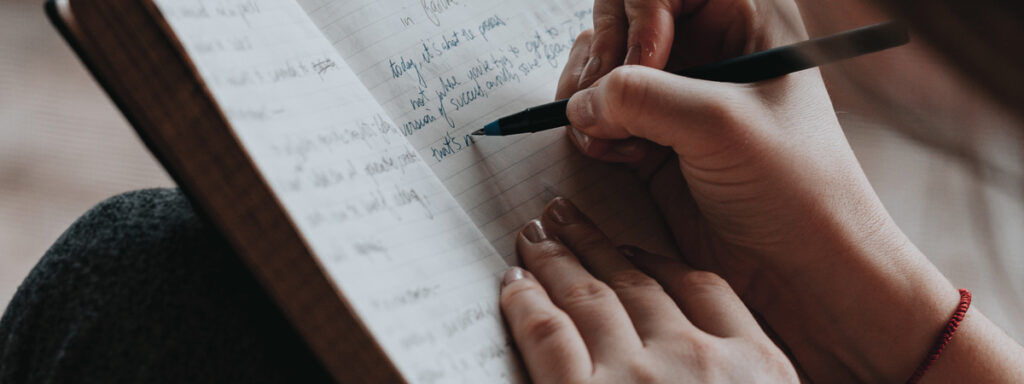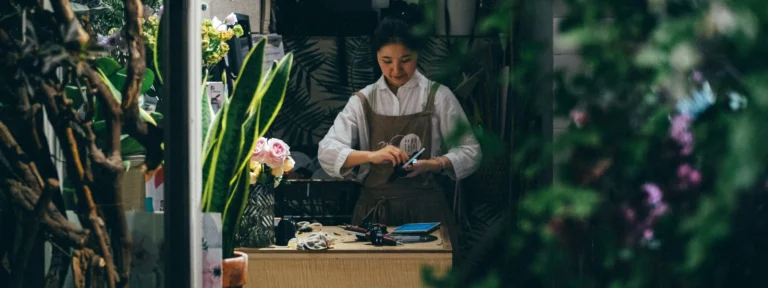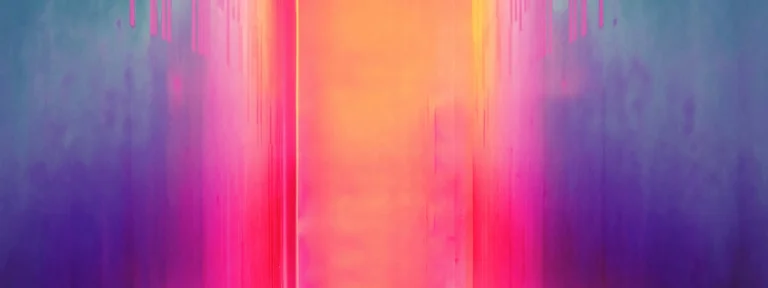Blogging has become a powerful tool for artists to showcase their work, connect with a broader audience, and establish their online presence. An art blog can serve as a virtual gallery, providing a platform to share your creations, thoughts, and inspirations with the world. However, starting and maintaining a successful art blog requires careful planning and execution.
If you’re an artist looking to dive into the world of blogging, this comprehensive guide will walk you through the essential steps to launch a thriving art blog.
From setting clear goals and selecting the right platform to creating captivating content and promoting your blog, I will cover everything you need to know to make your art blog a success.
Define Your Goals

Defining your goals is a critical first step when starting an art blog. By clearly understanding what you want to achieve through your blog, you can shape its direction, content, and strategies to align with your objectives.
Here are some key aspects to consider when defining your goals:
Audience and Reach:
Determine the target audience for your art blog.
Are you aiming to connect with fellow artists, art enthusiasts, potential buyers, or a broader audience?
Identifying your target audience will help you tailor your content and communication style accordingly.
Exposure and Visibility:
Consider whether your primary goal is to gain exposure for your artwork.
Do you want to increase your online presence and have your art seen by a larger audience?
If visibility is your main objective, you might focus on creating visually appealing content, optimizing your blog for search engines, and promoting your work through social media platforms.
Artistic Growth and Documentation:
Perhaps your art blog is intended to serve as a personal space for documenting your creative journey and reflecting on your artistic growth.
In this case, your goals may revolve around self-expression, capturing your progress, and creating a visual diary of your artistic endeavors.
Networking and Collaboration:
If you’re looking to connect with other artists, collaborate on projects, or participate in the art community, your goals may involve building relationships and establishing yourself as a respected member of the art world.
Your blog can become a platform for artist spotlights, interviews, and guest posts, fostering a sense of community and collaboration.
Sales and Business Opportunities:
Some artists use their blogs as a means to showcase and sell their artwork.
If your primary goal is to generate sales or attract business opportunities, your blog may focus on
- presenting your artwork in an enticing way,
- providing details about purchasing options,
- and implementing strategies to drive traffic and conversions.
Education and Inspiration:
Consider whether you want to share your knowledge, techniques, and artistic insights with others.
If you aspire to educate and inspire fellow artists or art enthusiasts, your blog can feature tutorials, tips, and thought-provoking content that adds value to your readers’ artistic journeys.
It’s important to note that these goals are not mutually exclusive, and you can combine multiple objectives to create a well-rounded art blog.
Once you have a clear understanding of your goals, you can proceed to shape your blog’s content strategy, branding, and promotional efforts in a way that supports and reinforces your aspirations.
Remember to regularly reassess and refine your goals as your blog evolves and your artistic journey progresses. Flexibility and adaptability will help you stay focused and motivated on your path to a successful art blog.
Choose the Right Blogging Platform
When it comes to starting an art blog, selecting the right platform is essential.
Consider factors such as ease of use, customization options, and the ability to showcase your artwork effectively.
Popular blogging platforms like WordPress, Blogger, and Squarespace offer user-friendly interfaces and a range of templates that can be customized to reflect your artistic style.
Establish Your Brand
Branding plays a crucial role in the success of any blog.
Determine your unique artistic style and voice, and ensure that your blog’s design, logo, color scheme, and overall aesthetics align with your artistic identity.
Consistency in branding will help create a memorable experience for your audience and establish your blog as a reputable source of artistic inspiration.
To learn more about personal branding check out, “The Power of Personal Branding: Building Your Professional Identity.”
Create Compelling Content
The heart of any successful blog lies in its content.
As an artist, you have a distinct advantage when it comes to captivating your audience with visually appealing and thought-provoking content.
Consider incorporating the following types of content into your art blog:
Showcasing Your Artwork:
Share high-quality images of your artwork, accompanied by engaging descriptions that provide insight into your creative process, inspiration, and techniques.
Tutorials and Tips:
Educate and inspire your readers by sharing tutorials, techniques, and tips related to your artistic medium. This type of content not only adds value to your blog but also positions you as an expert in your field.
Artist Spotlights:
Collaborate with fellow artists by featuring guest posts or interviews on your blog. This not only introduces your audience to new artists but also helps build a supportive network within the art community.
Personal Reflections:
Share your thoughts, experiences, and personal insights related to art and creativity. This allows your readers to connect with you on a deeper level and fosters a sense of authenticity.
Optimize for Search Engines
To attract a wider audience to your art blog, it’s crucial to optimize your content for search engines.
Conduct keyword research to identify popular search terms relevant to your niche and incorporate them strategically in your blog posts.
Pay attention to on-page optimization, including meta tags, headings, and alt text for images.
Additionally, focus on building quality backlinks by guest blogging, collaborating with other artists, or sharing your content on social media platforms.
If you haven’t already, check out, “Understanding Search Engine Optimization (SEO)” to learn more about SEO.
Engage with Your Audience
Engaging with your audience is a vital aspect of running a successful art blog.
It not only helps foster a sense of community but also establishes a deeper connection with your readers.
Here are some effective strategies to engage with your audience:
Respond to Comments and Messages:
Actively monitor your blog’s comments section and promptly respond to any comments or messages you receive.
Engage in conversations, express gratitude for feedback, and provide thoughtful responses to questions.
By showing that you value and appreciate your readers’ input, you encourage ongoing engagement and build a sense of connection.
Encourage Discussion:
Pose questions or ask for opinions within your blog posts to encourage readers to share their thoughts.
Create an open and inviting atmosphere where readers feel comfortable expressing their ideas and experiences.
Respond to their comments and engage in meaningful conversations to deepen the engagement.
Share Behind-the-Scenes Content:
Give your audience a glimpse into your artistic process by sharing behind-the-scenes content.
This could include progress shots, studio setups, works in progress, or insights into your creative techniques.
Sharing these personal and authentic moments creates a sense of intimacy and invites your audience to become part of your artistic journey.
Collaborate with Your Audience:
Invite your readers to actively participate in your blog by hosting contests, challenges, or collaborative projects.
For example, you could organize an art challenge where readers create artwork based on a specific theme and share it on your blog or social media platforms.
By involving your audience in these activities, you foster a sense of belonging and create opportunities for shared experiences.
Showcase Reader Contributions:
Celebrate and showcase your readers’ work on your blog.
Feature a “Reader Spotlight” section where you highlight and share artwork, stories, or creative projects submitted by your audience.
This not only acknowledges their talent and contribution but also encourages others to engage and participate.
Seek Feedback and Implement Suggestions:
Regularly seek feedback from your audience to understand their preferences and interests.
Conduct surveys, polls, or open-ended questions to gather insights on topics they would like to see covered, improvements they suggest, or any other feedback they may have.
Actively consider and implement relevant suggestions to show that you value their opinions and are committed to providing valuable content.
Attend Events and Meetups:
Consider attending art events, exhibitions, or meetups where you can connect with your readers in person.
Meeting your audience face-to-face provides an opportunity to build stronger relationships, gain a deeper understanding of their interests, and create lasting connections within the art community.
Remember that engaging with your audience is an ongoing process that requires consistent effort and genuine interaction.
Pay attention to the needs and preferences of your readers, adapt your content to meet their expectations, and continuously nurture the relationship you have with them.
By actively engaging with your audience, you’ll create a loyal and supportive community around your art blog.
Promote Your Blog
To expand your reach and attract new readers to your art blog, effective promotion is essential.
Leverage the power of social media platforms such as Instagram, Facebook, Twitter, and Pinterest to share your blog posts, engage with followers, and collaborate with other artists and influencers.
I have an article, “Social Media Marketing 101: Building Your Brand’s Presence” check it out to see how to leverage social media marketing.
Join relevant online communities, forums, and art-related groups to connect with like-minded individuals and share your expertise.
Consistency and Persistence
Consistency and persistence are the keys to long-term success in art blogging.
Set a regular posting schedule and stick to it. Consistently delivering high-quality content will not only keep your existing readers engaged but also attract new ones.
Remember that building a successful art blog takes time, so stay persistent and continue to refine your strategies based on audience feedback and analytics.
Conclusion
Launching and maintaining a successful art blog is an exciting endeavor that can open up new opportunities for artists.
By defining your goals, choosing the right platform, creating compelling content, optimizing for search engines, engaging with your audience, and promoting your blog effectively, you’ll be on your way to building a thriving online presence as an artist.
Stay true to your artistic voice, remain consistent, and keep refining your strategies to make your art blog a valuable resource for both yourself and your readers.



